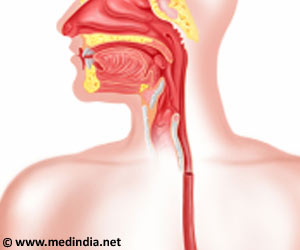A recent study discusses how smoking and human papillomavirus (HPV) together can increase the risk of head and neck cancer.
- Head and neck cancers are cancers that start in the squamous cells that line the mucosal surfaces of the head and neck
- A recent study has shown that the combined effects of cigarette smoke and HPV on cells increase the risk of head and neck cancer
- However, since the study is at a starting point, further investigations are required
Interaction between Cigarette Smoke and Human Papillomavirus 16 E6/E7 Oncoproteins to Induce SOD2 Expression and DNA Damage in Head and Neck Cancer
Go to source). The study's findings shed light on elements of the molecular pathways at work in head and neck cancer, paving the door for novel prevention and treatment options, as well as additional treatments that could help patients.
The term "head and neck cancer" refers to cancers of the mouth, nose, sinuses, tonsils, throat, and thyroid. It impacted over 830,000 people worldwide in 2020, killing more than half of them.
According to the most recent data from the National Cancer Institute (INCA), it killed about 21,000 people in Brazil in 2019.
HPV as an Emerging Risk Factor for Head and Neck Cancer
Historically, the main causes have been alcohol, cigarettes, and poor dental hygiene, but in recent decades, HPV has emerged as a substantial risk factor, particularly for younger and more affluent patients. Head and neck cancer is currently one of the world's fastest-growing kinds of cancer linked to HPV.The Interaction of HPV and Tobacco and Their Relationship with Cancer
"Instead of continuing to analyze smoking and HPV as oncogenic factors separately, we set out to focus on their possible interaction," said Enrique Boccardo, penultimate author of the article and a professor in the Department of Microbiology at the University of São Paulo's Biomedical Sciences Institute (ICB-USP) in Brazil."Both smoking and HPV are associated with heightened oxidative stress and DNA damage, which are factors in cancer, and according to previous research, can regulate superoxide dismutase 2 [SOD2], a putative biomarker of oral cancer malignancy and other diseases associated with HPV."
The researchers began by analyzing oral cells that contained the oncoproteins HPV16 E6 and E7 [indicating HPV infection] and were exposed to cigarette smoke condensate in vitro. SOD2 levels and DNA damage were found to be considerably higher in comparison to controls, indicating a detrimental interaction between HPV and cigarette smoke.
The control cells expressed less SOD2 than the cells that expressed E6 and E7 or the cells exposed to cigarette smoke, while the cells that expressed the oncoproteins and were exposed to cigarette smoke expressed more SOD2 than either, indicating the interaction between the presence of HPV genes and cigarette smoke.
The second part of the experiment involved analyzing genomic data from 613 samples in The Cancer Genome Atlas (TCGA), a public archive containing cancer-causing genetic alterations (acquired from genome sequencing and bioinformatics). To confirm the findings, the researchers focused on SOD2 transcription analysis.
The Starting Point Of Understanding the Relationship Between HPV, Tobacco, and Cancer
"Although in vitro studies take place in an artificial environment, they're a starting point for an understanding of what happens in more complex models and could enable us in the future to intervene objectively with some benefit," Boccardo said."For example, HPV vaccination is currently available only from the SUS [Sistema Único de Saúde, Brazil's national health service] for children aged 9-14 because studies have evidenced its efficacy against genital pathologies, but I believe it should be possible to consider extending the age group in order to prevent diseases in other anatomical regions."
This study in particular, he added, translates the results obtained in the laboratory to clinical analysis by surmounting the "Achilles heel" of basic research, which is the difficulty of access to human samples, thanks to technological advances leading to the creation of databases for human samples like the one used in the study.
These databases include RNA and protein expression analysis, as well as data collected over long periods.
"The next step would be to increase the complexity of the model utilized, analyzing the functional question in the context of normal expression of viral proteins, where the HPV promoter does in fact regulate E6 and E7 expression," Boccardo said.
"We mustn't forget, for example, that events such as inflammatory processes can't be seen in vitro but are known to play a very important role in disease outcomes."
Reference:
- Interaction between Cigarette Smoke and Human Papillomavirus 16 E6/E7 Oncoproteins to Induce SOD2 Expression and DNA Damage in Head and Neck Cancer - (https://pubmed.ncbi.nlm.nih.gov/37108069/)
Source-Medindia
















